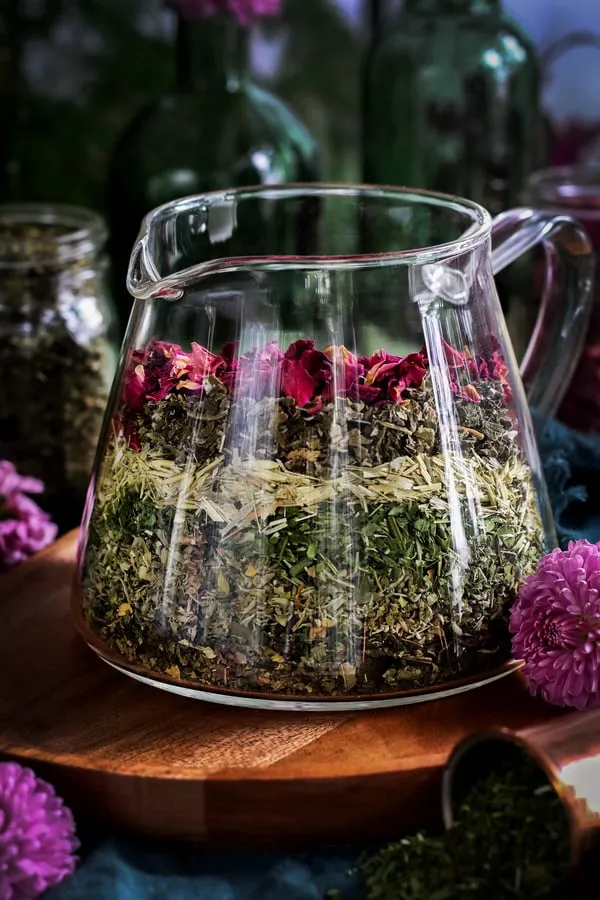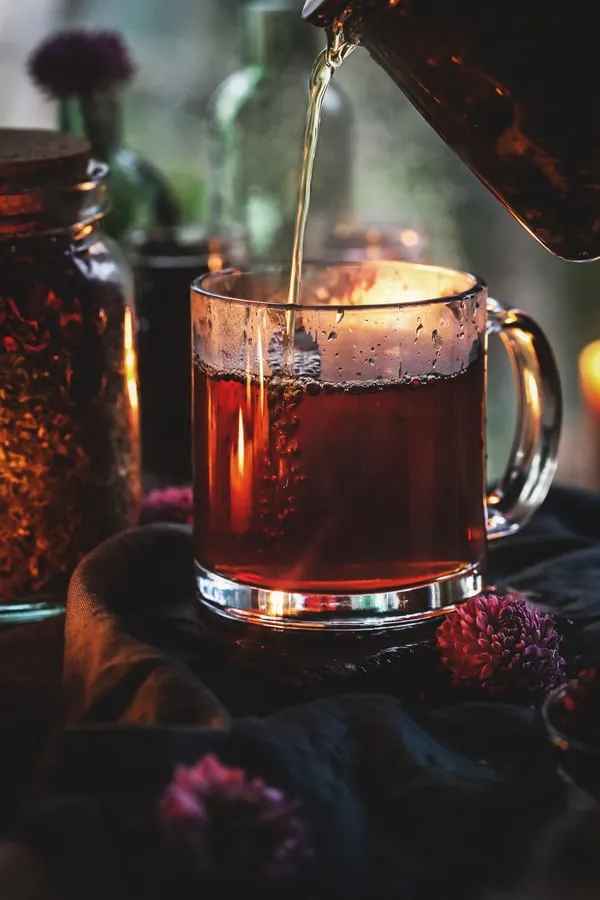Finding Your Center: Crafting Homemade Herbal Tea Blends for Meditation

As an artist, I find that my best work flows from a place of peace and stillness. But in our fast-paced world, finding that inner quietude can feel like searching for a rare bloom. Over the years, I’ve discovered that crafting homemade herbal tea blends for meditation can be a beautiful pathway to cultivating calm and presence.
There’s a certain magic in gathering fragrant herbs, carefully measuring each one, and infusing them with hot water. The simple act of preparing tea becomes a ritual, a mindful pause that allows us to transition from the busyness of the day into a space of introspection. And as we sip these soothing blends, the carefully chosen herbs can gently guide us into a state of deep relaxation.
The Art and Science of Herbal Allies for Meditation
Just as a painter selects colors to evoke specific emotions, we can choose herbs for their unique properties. Herbalism, the practice of using plants for their therapeutic benefits, offers a wealth of knowledge about which botanicals can support our meditation practice.
For example:
- Nervines, such as oatstraw and skullcap, are known for their ability to calm the nervous system, easing anxiety and mental tension. Imagine these herbs as gentle whispers, quieting the chatter of the mind.
- Adaptogens, like ashwagandha or holy basil, help our bodies adapt to stress and can promote a sense of groundedness and resilience. Think of them as anchors, providing stability amidst the storms of life.
Crafting Your Personalized Meditation Tea Blend
The beauty of creating your own blends lies in the ability to customize them to your specific needs and preferences. Here’s a simple guide to get you started:
1. Setting Your Intention:
Before you begin, take a moment to connect with your intention. What qualities do you wish to cultivate in your meditation practice? Are you seeking deeper relaxation, enhanced focus, or perhaps a greater sense of emotional balance?
2. Choosing Your Herbs:
Once you have a clear intention, you can start exploring the world of herbs. I encourage you to research and learn about the different properties of each herb. Here are a few ideas to spark your creativity:
Base Herbs (Foundation of the Blend):
- Nettle Leaf: Rich in vitamins and minerals, nettle offers a nourishing foundation.
- Raspberry Leaf: Traditionally used to support women’s health, it also adds a pleasant, slightly tart flavor.
Supporting Herbs (Addressing Specific Needs):
- Oatstraw: Known for its calming and grounding properties, oatstraw is excellent for soothing frayed nerves.
- Skullcap: Helpful for easing anxiety and quieting racing thoughts.
- Chamomile: A classic herb for relaxation and sleep support.
- Lavender: Beloved for its soothing aroma and ability to promote tranquility.
Accent Herbs (Enhancing Flavor and Subtle Effects):
- Rose Petals: Add a touch of floral sweetness and are associated with love and compassion.
- Catnip: Despite its association with cats, catnip can be surprisingly calming for humans, easing tension and promoting relaxation.
- Peppermint: Can aid in digestion and enhance focus, making it a good addition for morning meditations.
A Word of Caution: If you’re pregnant, nursing, or have any underlying health conditions, consult with a qualified healthcare professional before using herbs medicinally.
3. Blending and Storing Your Tea:
Once you’ve chosen your herbs, it’s time to blend them together. You can experiment with different ratios to find what tastes best to you. I recommend starting with equal parts of each herb and adjusting from there.
Store your blend in an airtight container in a cool, dark place to preserve its freshness.
4. Ritualizing Your Tea Time:
The act of preparing and sipping your tea can be a meditation in itself. Here’s how to infuse your tea time with mindfulness:
- Heat filtered water: As the water heats, visualize it carrying away any tension or stress.
- Add your herbs: Take a moment to appreciate the colors, textures, and aromas of your chosen herbs.
- Steep and infuse: Allow the herbs to steep for 5-10 minutes, watching as the water transforms into a vibrant infusion.
- Pour and sip: Savor each sip, noticing the flavors and sensations in your mouth.
 Layers of meditation tea herbs sit in a glass vessel
Layers of meditation tea herbs sit in a glass vessel
A Simple Meditation Tea Recipe to Begin Your Journey
If you’re new to herbal tea blending, here’s a simple recipe to get you started:
Ingredients:
- 1 teaspoon organic nettle leaf
- 1 teaspoon organic raspberry leaf
- 1 teaspoon organic oatstraw
- 1 teaspoon organic catnip leaf
- 1 teaspoon organic skullcap leaf
- 1 teaspoon organic rose petals
Instructions:
- Heat 8 ounces of water until it reaches a gentle simmer.
- Place herbs in a teapot or French press.
- Pour hot water over herbs, cover, and steep for 5-10 minutes.
- Strain herbs and pour tea into your favorite mug.
- Sip slowly and mindfully.
 Meditation tea being poured into a mug
Meditation tea being poured into a mug
Beyond the Blend: Embracing the Journey
Remember, there’s no right or wrong way to create an herbal tea blend for meditation. The most important ingredient is your intention and willingness to experiment. As you explore the world of herbs and discover the blends that resonate with you, you’ll find that crafting homemade teas becomes a rewarding practice in self-care and creativity.
I invite you to explore the unique properties of different herbs and create blends that nourish your body and soul. As renowned herbalist Rosemary Gladstar once said, “The best way to learn about herbs is to taste them, smell them, feel them, and experience their magic for yourself.”
What are your favorite herbs for promoting peace and relaxation? Share your thoughts and experiences in the comments below! And if you’d like to explore more handcrafted treasures, visit the Robert Kline Art website for unique, one-of-a-kind gifts that inspire creativity and connection.
